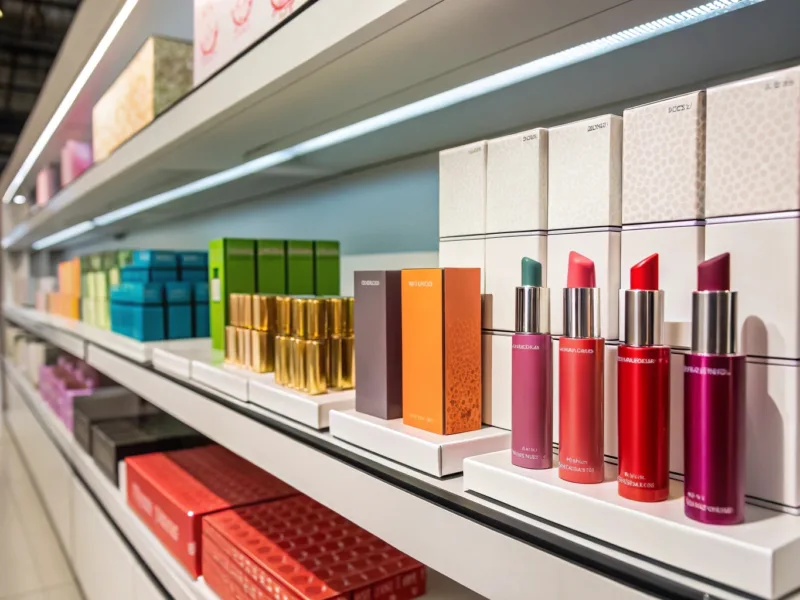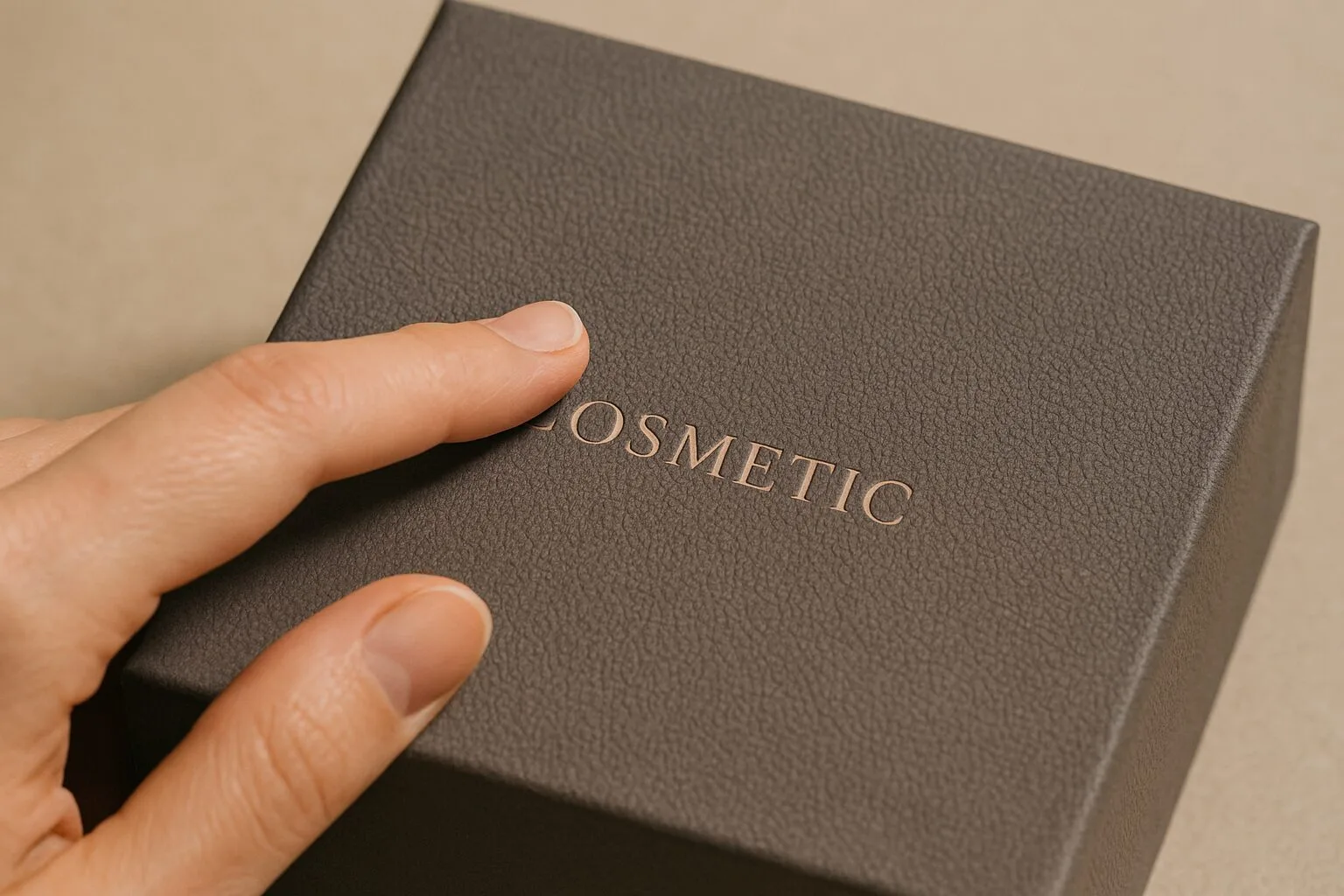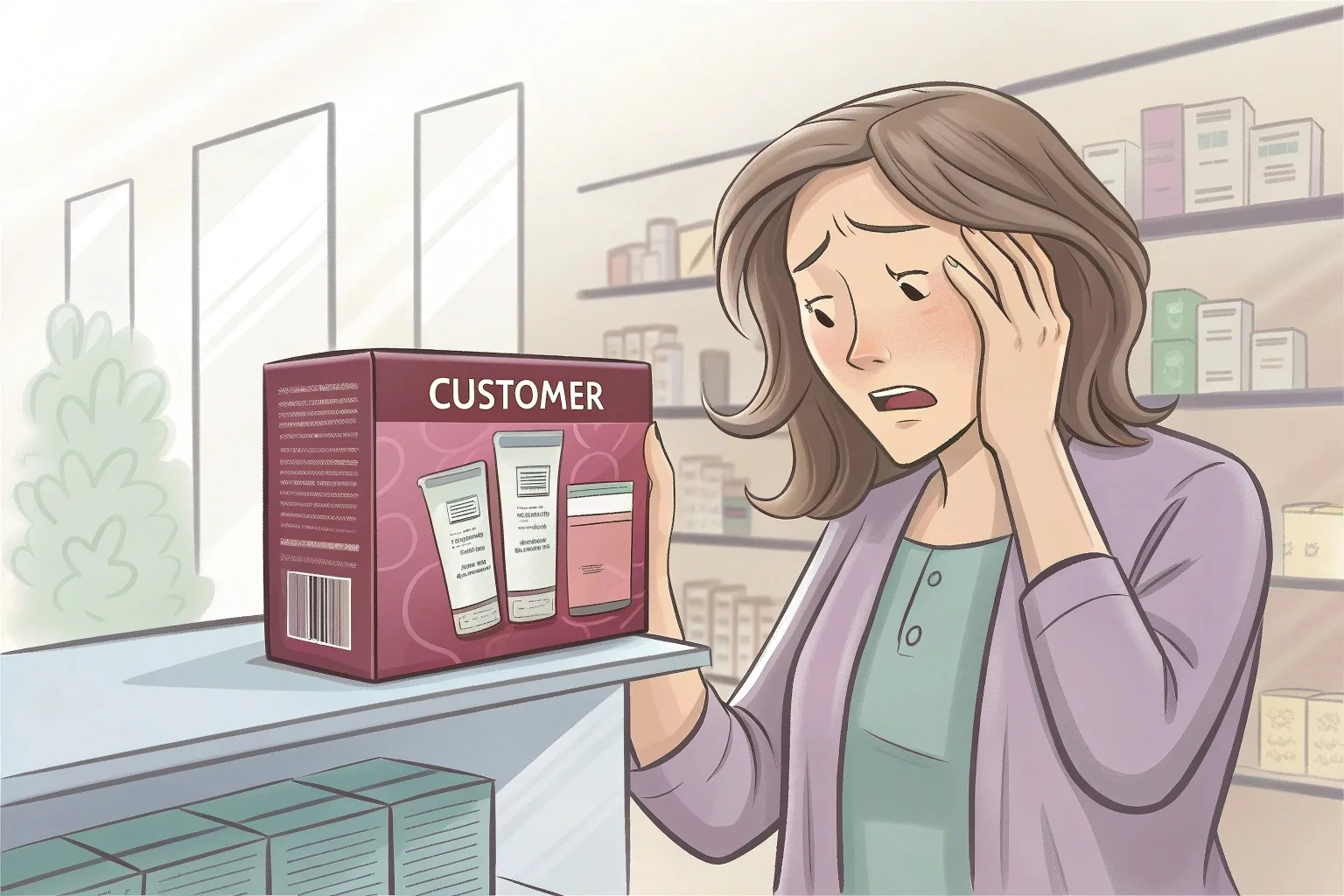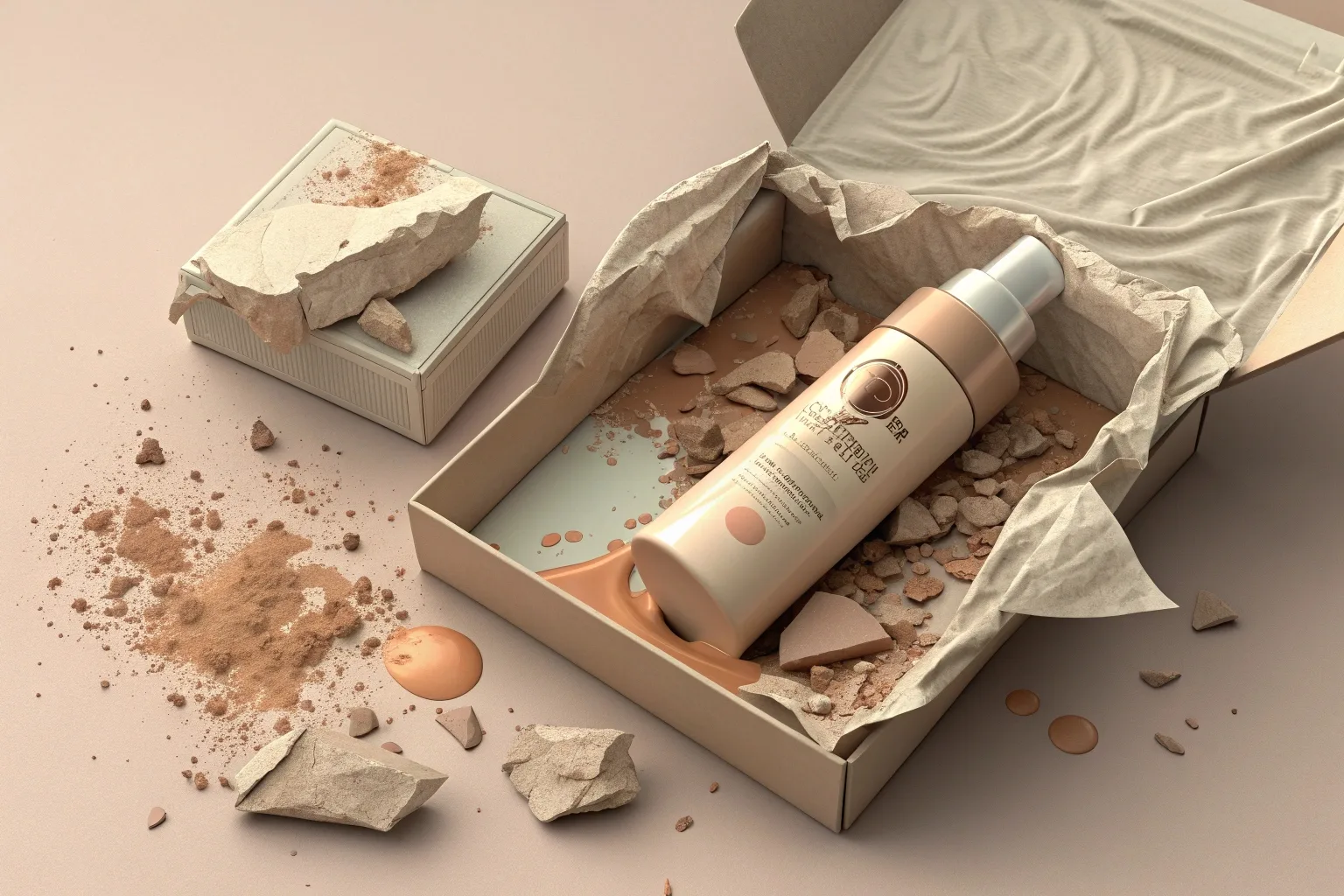
Your cosmetic product is amazing, but it's sitting on the shelf, unsold. You suspect the packaging is the problem, but you can't figure out exactly what's wrong.
Your packaging is likely failing because its design doesn't stand out, the materials feel cheap, or the messaging is unclear. If it doesn't align with your brand's luxury promise or the values of your target audience, customers will simply choose another product.
As a custom packaging manufacturer, I've seen incredible products fail because of a poor "first handshake" with the customer. Your box is that handshake. Let's break down the common reasons why your packaging might not be performing and what you can do about it.
How Do Your Design and Materials Fail to Make an Emotional Connection?
Does your box look generic on a crowded shelf? Does the material feel flimsy, betraying the premium product inside? This creates a disconnect that kills the customer's interest before they even try the product.
A weak visual design and cheap-feeling materials fail to create a sense of luxury or brand identity. If your packaging doesn't stand out and feel valuable, it cannot build the emotional connection that drives a purchase decision in the beauty industry.

In the cosmetics world, customers are not just buying a product; they are buying an experience, a feeling, and a promise. The packaging is the first chapter of that story. If the cover is dull or feels cheap, no one will bother to read on. This is where the synergy between visual design and material choice becomes critical. A failure in either of these areas can make your product invisible or, worse, undesirable.
Your Visual Design Lacks Impact
The retail shelf is a battlefield for attention. Your packaging has milliseconds to capture a customer's eye. If your design is not doing its job, it's because of a few common mistakes:
- It Blends In: You used common colors, standard fonts, and a layout that looks like everyone else's. There's no unique visual element that makes a customer pause and look closer.
- It's Outdated: Design trends in cosmetics change quickly. A design that looked fresh five years ago may look dated and irrelevant to today's a minimalist, clean, or vibrant aesthetic that younger consumers prefer.
- It Doesn't Reflect Your Brand: Your brand is youthful and energetic, but your box is a muted, serious gray. This mismatch between your brand identity and your visual presentation confuses the customer about who you are.
Your Materials Feel Inconsistent with Your Price Point
The physical feel of the packaging is just as important as its look. A customer will pick up the box, and that tactile experience will either confirm or contradict the brand's promise.
- Example of Mismatch: You are selling a $60 luxury face serum, but it comes in a thin, flimsy paper box that feels like it could tear easily. The customer immediately thinks, "If they cut corners on the box, did they cut corners on the ingredients too?"
At Finer-packaging, we always discuss material options with our clients. The right material choice elevates the perceived value of the product.
| Material Option | Perceived Value & Feel | Best For... |
|---|---|---|
| Thin Cardstock | Inexpensive, lightweight | Mass-market, low-price-point items |
| Thick Art Paper (350gsm+) | Substantial, smooth, excellent for printing quality | Mid-range to premium skincare & makeup |
| Rigid Board (Greyboard) | Heavy, durable, and luxurious (like an iPhone box) | High-end luxury products, gift sets |
| Textured Paper | Unique, tactile, and artisanal | Niche, natural, or handcrafted brands |
Choosing a thicker, more substantial material or adding a soft-touch lamination instantly communicates quality and justifies a higher price.
Is Your Packaging Communicating the Wrong Message?
Is your packaging confusing? Customers look at your box and have no idea what the product does or who it is for. This lack of clarity makes them move on to a competitor's product.
When your packaging fails to clearly state the product's benefits, brand values (like sustainability), or key information, it creates mistrust. Unclear messaging makes the customer's decision harder, so they will choose a brand that communicates with confidence and clarity.

Once your packaging has captured a customer's attention with its visual appeal, its next job is to communicate. It needs to answer the customer's questions quickly and persuasively. What is this product? What will it do for me? Why should I choose this brand? If your messaging is weak, confusing, or fails to connect with the customer's values, the initial attraction will fade, and the sale will be lost. The words and symbols on your box are your silent salesperson.
Unclear Product Benefits and Purpose
You know your product is a "hyaluronic acid and niacinamide clarifying serum," but your customer does not. They just want to know if it will help their skin. Your packaging must translate technical features into clear, desirable benefits.
- Bad Example: "Contains 2% Salicylic Acid"
- Good Example: "Clears Pores & Reduces Blemishes"
Your messaging hierarchy should be clear. The most important benefit should be the easiest to see. Use the front of the box for the primary promise and the back for the detailed ingredient list and instructions. If a customer has to search for the reason to buy your product, you have already failed.
Ignoring Modern Consumer Values
Today's consumers, especially in cosmetics, buy from brands that share their values. One of the most important values right now is sustainability. If your packaging is a mix of non-recyclable plastics and foils, it sends a negative message to a growing segment of your audience.
- Communicating Sustainability: Use clear symbols (like the recycling mobius loop), choose materials like FSC-certified paper, and consider minimalist designs that reduce waste.
- The Impact: Stating that your box is "Made from 100% Recycled Materials" can be a powerful purchasing trigger for an environmentally conscious shopper. Ignoring this can make your brand seem out of touch.
Insufficient or Inaccurate Information
Trust is essential in skincare and cosmetics. Customers are putting these products on their bodies. Your packaging must provide clear, accurate, and legally compliant information.
- Ingredient List: Must be easy to read. Using a tiny font is a common mistake that can look like you're trying to hide something.
- Instructions: How to use the product should be simple and clear.
- Net Weight/Volume: Must be clearly displayed.
Any error or omission in this information can not only deter a sale but also create legal problems for your brand.
Does Your Packaging Create a Frustrating User Experience?
Does your box look great but is impossible to open? Does the product leak or get damaged in transit? A beautiful package that fails in its basic duties will lead to customer frustration and bad reviews.
Poor functionality, like a difficult-to-open box, or inadequate protection that results in a damaged product, creates a negative experience. This practical failure overrides any aesthetic appeal and can permanently damage a customer's perception of your brand's quality.

The final test of your packaging comes after the purchase. The customer takes it home and interacts with it directly. This "unboxing" experience and the daily use of the product are crucial touchpoints that solidify their opinion of your brand. If this experience is frustrating, inconvenient, or disappointing, it doesn't matter how beautiful the box looked on the shelf. A practical failure can undo all of your hard work in design and marketing, often leading to product returns and negative online reviews.
Functionality: The Unboxing and Usage Experience
The way a customer opens and uses your packaging should be seamless and satisfying. Poor functionality can manifest in several ways:
- Difficult to Open: Boxes that require too much force, tear awkwardly, or need tools to open create instant frustration. Luxury packaging often uses magnetic closures or ribbon pulls to make opening an elegant and simple process.
- Difficult to Dispense: This is more about the primary container, but the secondary box should support it. If the user manual for a complex dispenser is unclear or the box doesn't hold the product securely, it contributes to a poor experience.
- Not Resealable: For products that are not single-use, if the box is intended for storage, it should be easy to close again. A box that is destroyed upon opening is only good for the initial presentation.
Product Protection: The First Job of Any Box
Before anything else, a box has one fundamental job: to get the product to the customer safely. If your packaging fails at this, nothing else matters.
- Damage in Transit: The box material and internal structure must be strong enough to withstand shipping from our factory in China to your distribution center and then to the final retailer. A crushed box on a shelf screams "low quality."
- Product Leakage: The internal design of the box should hold the product snugly. We often recommend custom inserts made of paperboard, EVA foam, or molded pulp to prevent the product from moving around and potentially leaking or breaking.
Here is a quick checklist for evaluating your packaging's structural needs:
| Factor | Key Question | Solution Examples |
|---|---|---|
| Product Weight | Is the product heavy for its size (e.g., a glass jar)? | Use thicker paperboard (350-400gsm) or a rigid box. |
| Product Fragility | Can the primary container (glass, etc.) break easily? | Add a protective insert (foam, molded pulp, etc.). |
| Shipping Method | Will this be shipped individually (e-commerce) or in cases? | E-commerce boxes need to be much more durable. |
| Retail Environment | Will it be handled a lot by customers on the shelf? | A protective varnish or lamination prevents scuffs. |
A product that arrives damaged is often worse than no product at all, as it requires you to manage returns and replacements, adding cost and damaging your brand's reputation for quality.
Conclusion
Your cosmetic packaging is your most important marketing tool. If it's failing, it's because of a disconnect in design, messaging, or function. Listen to your customers and fix these issues.






